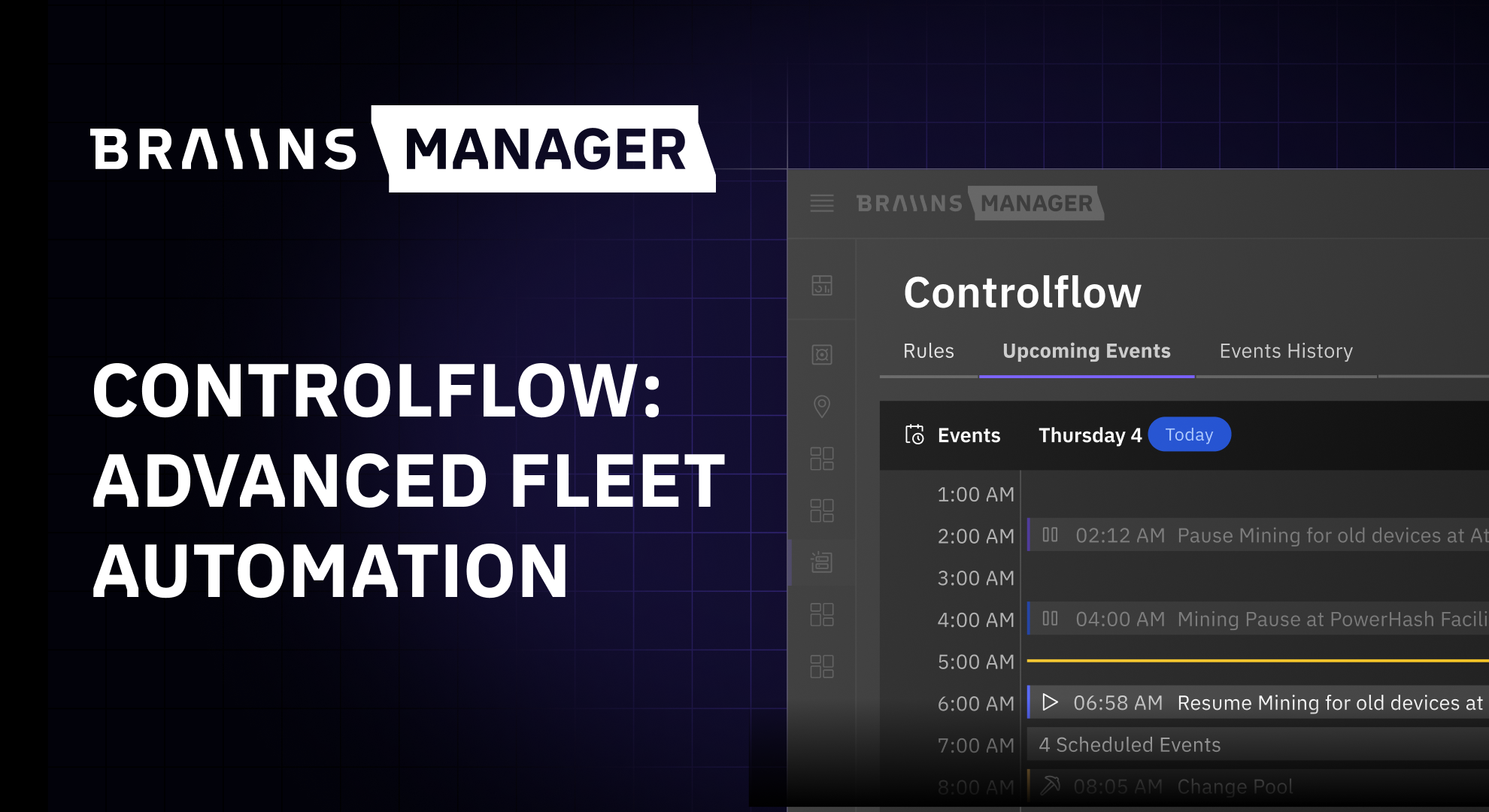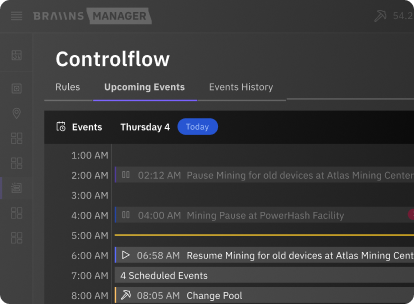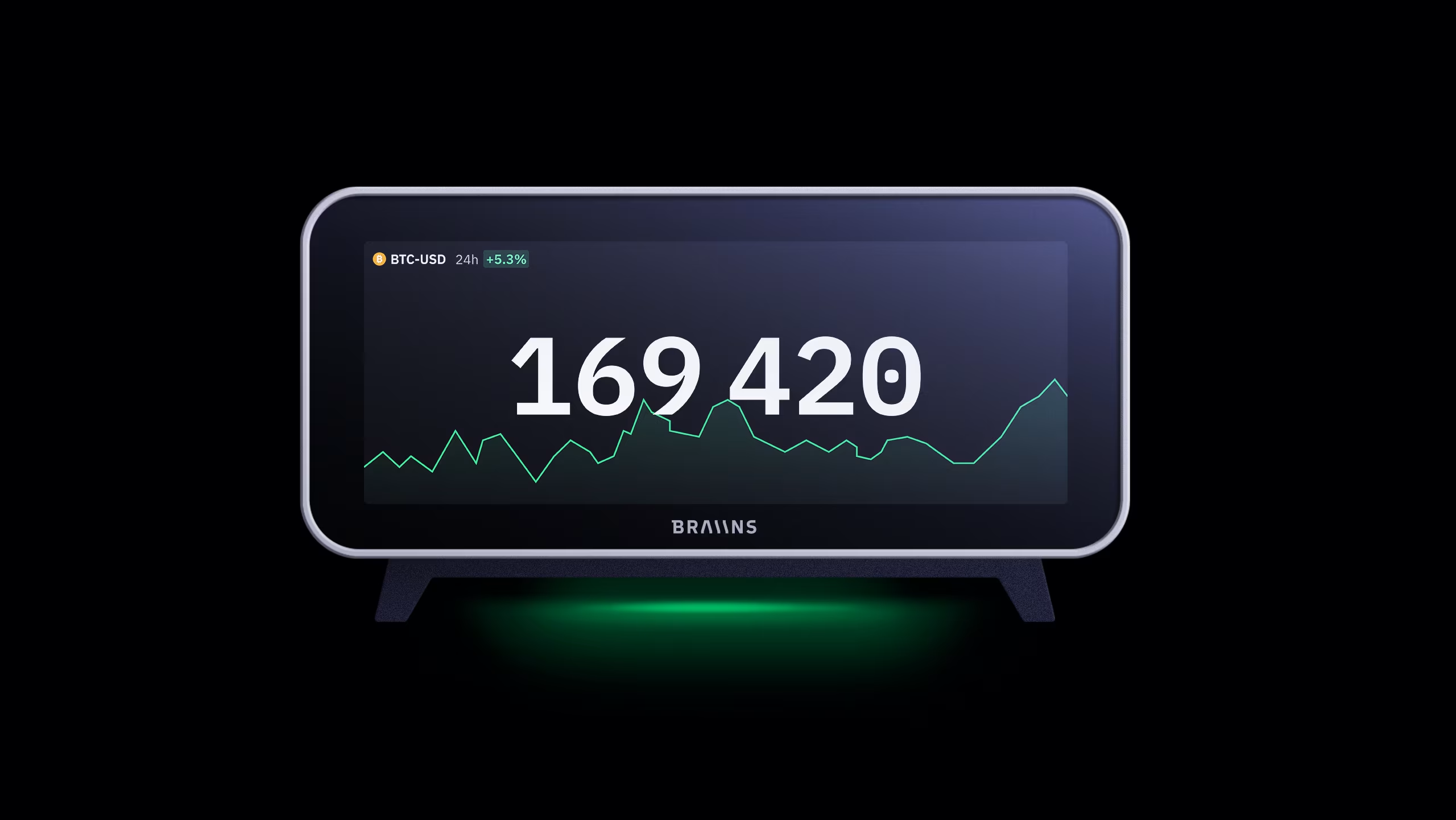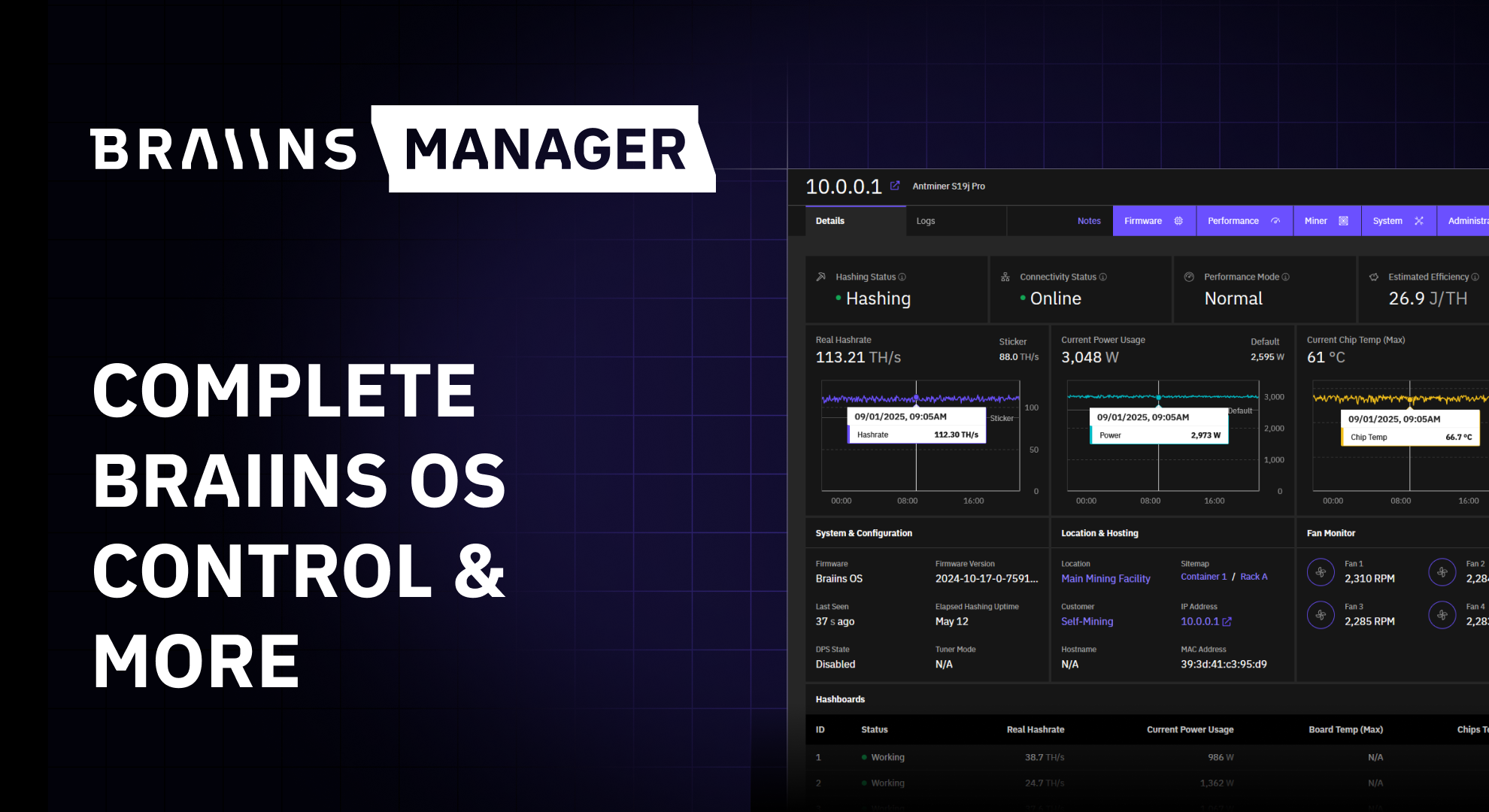How to Mine Bitcoin [Beginner’s Guide]
Published
15.12.2020
This blog is a guide to help you decide if you should start mining bitcoin with tips on what to do in order to get started.

Table of Contents
Mining bitcoin is difficult and complex.
Competition in the mining industry is fierce and many variables need to be considered when selecting mining rigs and setting up your facility.
This guide is for anyone who is completely new to mining. If you’re looking to mine at home to make some money or just as a hobby, or if you want to send hosted machines to run and produce some sats, we’ll tell you everything you need to know so you can start mining bitcoin as soon as possible.
Is Bitcoin Mining Worth It?
Profit is the biggest motivation to get into mining. Simply put, if your cost to mine 1 bitcoin is lower than the current price, then mining allows you to accumulate bitcoin at a discount. In other words, if the current bitcoin price is $100,000 and you can mine 1 bitcoin for a total cost of $75,000, then you have a 25% profit margin. This is effectively similar to purchasing bitcoin at 25% below the market price.
But did you know there are other benefits to mining?
For one thing, mining lets you stack non-KYC bitcoin.
Why is that important? Well, purchasing bitcoin through an exchange typically requires that you reveal your identity due to “Know Your Customer” regulations. This leaves you susceptible to tax liabilities, confiscation of your bitcoin if it’s stored by a custodial service, and being blocked from using other regulated services. If you mine your bitcoin directly, it’s not tied to your identity.
Besides that, another reason to get into mining is as a hobby or for education. It can be fun to learn and better understand this important aspect of bitcoin. As we will get into later, there are so many variables in any mining operation that make for a fun challenge.
There is also a more noble reason to mine, even on a small scale. By mining – even with just 1 terahash per second – you're contributing to bitcoin’s decentralization.
Whether you're mining to make money, starting a new hobby, or simply contributing to bitcoin’s decentralization, mining is not easy. Regardless of your reason, this guide will walk you through the entire process.
Required Environment to Mine Bitcoin
Before deciding which ASIC miner to purchase, you need to determine if you have the environment to properly run a mining operation. This comes down to 4 basic requirements:
Power Capacity: Most modern miners require a 220V outlet. However, most residential homes and apartments are only equipped with standard 110V outlets, with exceptions for things like appliances. If you don’t have any 220V outlets available, one workaround is to hire a licensed electrician to install a 220V outlet. Any DIY solution puts your safety at risk and is not recommended. Unfortunately, using a 110V to 220V converter will not work.
Internet Connection: Each miner needs a steady internet connection. This can be best achieved with an ethernet cable plugged directly into the router. Luckily, these cables come in long lengths which means the router doesn’t need to be close to the miner. You can also use WiFi, but it’s typically not as reliable.
Air Flow / Cooling: ASIC miners generate a lot of heat. It’s the 1st law of thermodynamics: the energy consumed by the miner is not destroyed, but rather converted into heat. This means proper ventilation and fans are needed to help circulate the air. Even better, perhaps you can repurpose the heat to keep your garage or basement warm in the winter, killing two birds with one stone. (See an example of repurposing ASIC heat below).
Noise Reduction: Not only do miners generate a lot of heat, they're also very loud. A single machine can produce 70-80 decibels (db) of noise. Most miners can even reach up to 90db. This is comparable to a lawn mower running inside your home. It’s recommended to put your ASICs in an insulated container to soundproof them, or run them in a room where you and your neighbors won’t be bothered by the noise.
The reality is, running miners at home is disruptive and requires a lot of setup work for most people. It's not as simple as plug and play. So if you want to get into mining at a small scale, you’ll have to keep these factors in mind.
An alternative option is to purchase your miners and find an industrial location to host them. There are numerous hosting facilities around the world where you can get better electricity prices than the typical residential area. We recommend that you look into this as an option if you want to scale beyond one or two ASICs.
Choosing an ASIC Miner
The first decision you have to make once you’re committed to becoming a miner is which ASIC or ASICs you’ll mine with. We’ll break down all the factors you should take into consideration when making this decision.
As with most things, you can save a lot of money here by purchasing used ASICs instead of brand new ones.
Luckily there is a thriving peer-to-peer market for used miners. However, they are not easily found on the web. Rather, they often take place in Telegram groups or other chat messaging platforms. You should also be aware that these secondary markets for miners can contain fraudsters, so it is strongly recommended to only purchase from verified sellers.
As for what types of machines you should look for specifically, that depends on your appetite for risk and your environmental factors.
Miner Specifications
When selecting the right miner, the most important factors are:
Unit Price and Shipping Costs: The newer an ASIC is, the more efficient it should be. However, it will also be much more expensive. Additionally, the shipping, import fees, duties, and taxes are not usually included but should be factored into the retail price.
Hashrate: Measured in TH/s (terahashes per second). The higher the hashrate, the more bitcoin the ASIC will mine.
Power Consumption: Measured in Watts (W). This is the amount of energy the miner will consume. The more power a miner consumes, the higher the electricity cost incurred. Converting to Kilowatt hours (kWh) and finding the electricity rate (usually quoted in kWh) from the electricity provider will determine your operating costs.
Mining Pool Selection
Mining pools are a critical part of the modern bitcoin mining business. The reason that they are called “pools” is that they pool (i.e. aggregate or combine) the hashrate of many miners together. This is done in order to increase the frequency that the miners find blocks and thus earn revenue, making it more stable.
Nowadays, joining a mining pool is required to earn consistent payouts. There are only about 144 blocks mined per day on the bitcoin blockchain, while there are many thousands of miners. Any miners who don’t have HUGE operations will not earn revenue very frequently (if at all) if they try to mine on their own. It wouldn’t be a stable business operation.
Mining pools let miners work together by combining their hashrate. This gives miners smaller but more consistent payouts.
Our pool, Braiins Pool (formerly Slush Pool), is the 1st mining pool ever created, with more than 1.3M BTC mined since 2010.

It’s extremely easy to join a mining pool. You simply set up an account with the pool of your choosing, then copy the pool’s URL into your ASIC miner’s web interface.
Mining Software
Finally, once you have your operation set up and your ASICs in-hand, one last thing you can do to improve your mining profitability is use a custom firmware to optimize ASIC performance. At Braiins, we develop Braiins OS, famous for its Autotuning feature. The simple description for this is that it automatically tests different frequencies and voltages for your ASIC to find the settings that will mine most efficiently, at any power limit.
For miner installation, there’s Braiins Toolbox, and for mining management, there’s Braiins Manager. The right software can do wonders for the profitability of your bitcoin mining operation. The rabbit hole never ends, but it’s always great to start exploring it one hash at a time.
Solo Lottery Mining
Some people aren’t equipped with the right resources to mine bitcoin at home. Whether it’s cost-related, or they don’t have the right environment (as mentioned above), it simply may not be feasible. Fear not – there is another option.
Solo lottery mining, also known as mini mining, is when miners use a small, unprofitable bitcoin miner to try and find an entire block for themselves. With new blocks being found every 10 minutes, it is like constantly playing the lottery, because with such a small hashrate (generally 1 TH/s), the odds of finding a block are similar to winning the lottery. Still, there is education and style to this.

Products like the Braiins Mini Miner have come to the market (or its main copetitor Bitaxe), allowing bitcoiners to constantly try and find a block, while having the coolest desk decoration in bitcoin. Plus, the BMM 101 has all the makings of an ASIC found in a massive bitcoin mining farm, so it’s extremely similar to the “real thing”.
Braiins Can Help
While Braiins is known for its wide-ranging software stack, we also value education. Our blog and books are full of useful information to get you in the right direction when it comes to bitcoin mining.
Our Bitcoin Mining Handbook, by Daniel Frumkin, overviews many central parts of bitcoin mining. Our Bitcoin Mining Glossary, by Martin Connor, defines 256 mining-related terms and is useful for a beginner or mining OG. We also have the Bitcoin Mining Economics by Daniel Frumkin, which takes a more in depth look at mining as a multibillion dollar industry.

With all of this information, your next step is to take action. Even if you just add 1 TH/s to the bitcoin network, you are doing your part to both secure and decentralize it.
Remember – to mine more bitcoin, mine with Braiins.
Categories
Be the first to know!
Read Privacy Policy.
Most Recent Articles

Introducing Controlflow: Advanced Automation in Braiins Manager
9.12.2025




